If you happen to see a wild Peacock in your yard, you might want to feed it some snacks.
Luckily, Peacocks are very easy to please.
Feed a wild Peacock in your backyard protein, fruits, vegetables, and legumes. Bell peppers, berries, leafy greens, and seeds are some of the best vegetables you can provide. As for the protein, the Peacock should be able to find insects on its own, but you can also provide cat food or game feed that includes animal-based protein.
To learn more about what to feed a wild Peacock in your backyard, read on.
This article fully explains what you can feed the Peacock and what foods are best based on the time of year.
Let’s get started.
What Do Peacocks Eat?
To know what to feed a wild Peacock in your backyard, it’s helpful to know what these birds eat in the wild.
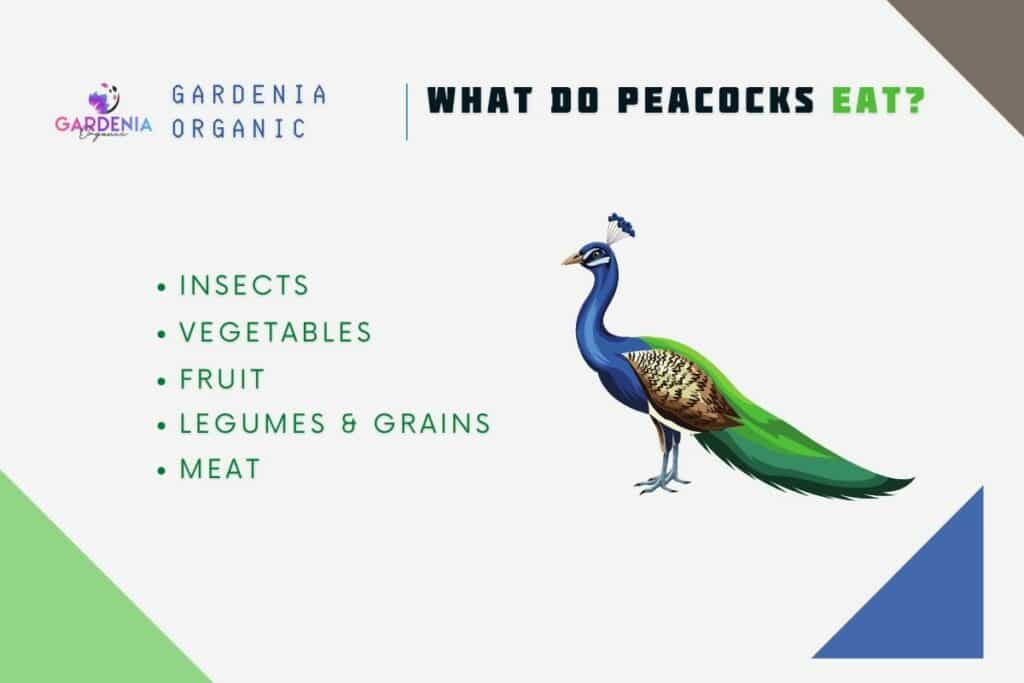
By replicating their diet, you know that the bird is getting healthy nutrients that it needs and enjoys.
Peacocks are omnivores, which means they eat both meat and vegetation. As a result, it’s not too hard to feed a Peacock.
They will eat practically anything you put in front of them.
You can separate the Peacock’s diet into categories like:
- insects
- vegetables
- fruit
- legumes and grains
- meat
Insects
If Peacocks could say their favorite food, they would say insects.
Insects provide great protein and are relatively easy to find. Some favorite insects frequently eaten by Peacocks include ants, centipedes, crickets, millipedes, and termites.
Peacocks love insects so much that you can often see them looking around flowers and other insect food sources.
Have You Noticed: Although it may look like the Peacocks are eating the flowers, they are most likely eating the insects around the flowers.
Vegetables
Even though the Peacock’s favorite food is insects, they consume a lot of vegetables too.
They often find their vegetables from:
- grass
- grass seeds
- cabbage
- leafy greens
- celery
Sometimes, Peacocks open up vegetables and root through them for the seeds but leave the flesh of the vegetable uneaten.
Fruit
Along with vegetables, Peacocks eat a lot of fruit. They often eat papaya, watermelon, pineapple, and berries.
Like with vegetables, Peacocks are sometimes known to break apart fruit just to get to the seeds inside it.
Legumes and Grains
Since Peacocks eat fruits and vegetables to get to the seeds within, it’s probably no shock that they love legumes and grains.
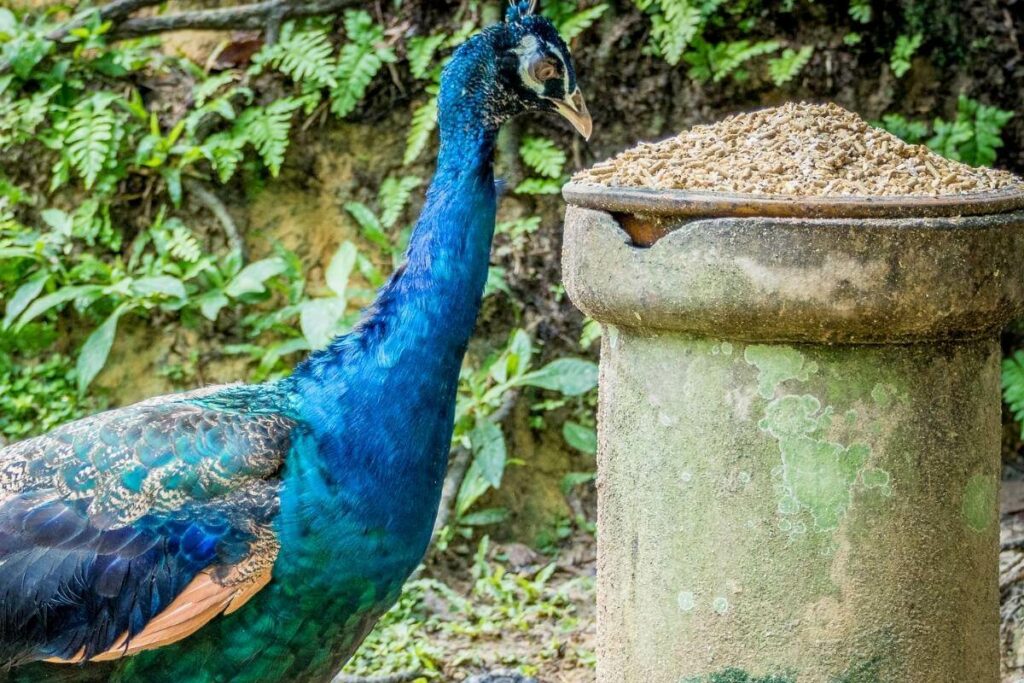
Just about any type of seed, nut, or legume the bird gets ahold of, it will eat.
On Occasion: Peacocks will eat grains like wheat or barley, but they don’t eat as much grain as other birds.
Meat
Insects are the primary protein source for Peacocks.
On occasion, they will eat traditional meat, especially that of amphibians and reptiles. All meat they eat is incredibly small.
Most often, Peacocks only eat amphibians and reptiles if the animal is found on their territory.
What to Feed a Wild Peacock
When feeding a wild Peacock, try to replicate its diet, as described above.
Only provide insects, vegetables, fruits, and legumes. Although you can provide grains and meat, Peacocks do not need a high amount of either.
For all Peacocks, you want to aim for a diet that is about 20% protein, but you can go slightly higher.
The rest of the diet should come from fruits, vegetables, grains, and legumes.
What to Feed Peacocks in the Summer
During the summertime, try to feed the Peacock in your backyard fruits and vegetables.
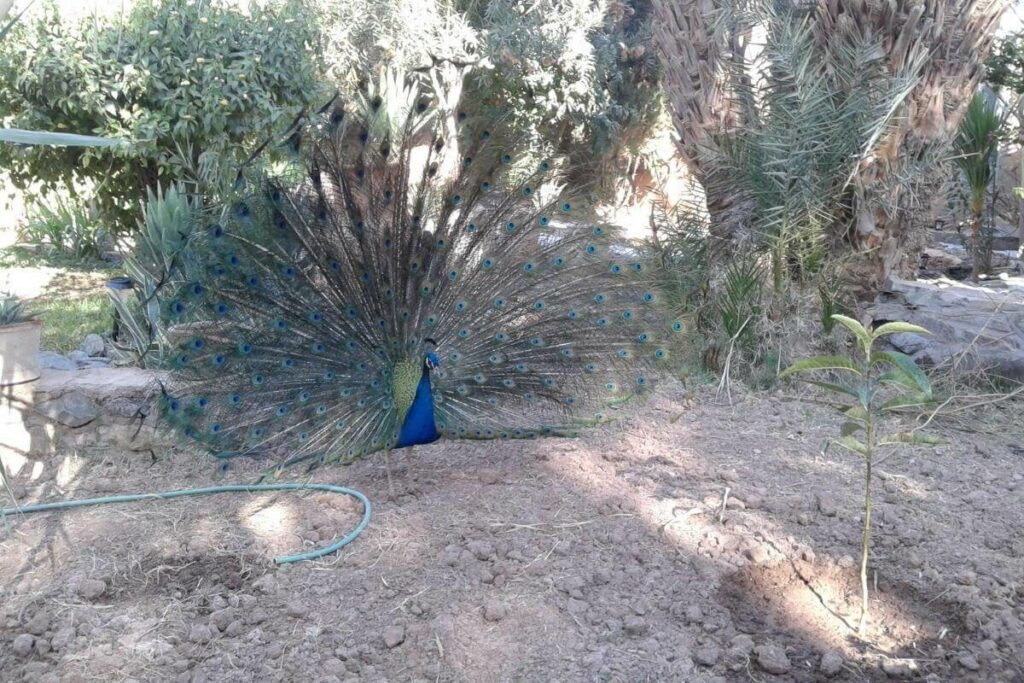
The fruits and vegetables ensure that the Peacock gets the nutrients it needs while keeping the bird hydrated.
We recommend bell peppers and berries. These foods are not only tasty to the Peacock, but they easily attract insects too.
From these foods, your wild Peacock gets to enjoy protein, fruit, and vegetables at the same time.
You might want to consider setting out some fresh water for the Peacock as well. Peacocks don’t need a lot of water, but an extra bowl may be nice during the hot months.
Most Likely: The Peacock will not need any help finding insects since they are so readily available during this time of year.
What to Feed Peacocks in the Winter
In the winter, all animals try to fatten up so that they can survive the temperature and have fewer resources. Peacocks are the same way.
So, you should feed your wild Peacock more protein in the winter than you did in the summer. Although you shouldn’t forget about the fruits and vegetables, it’s really the protein that the Peacock needs during this time.
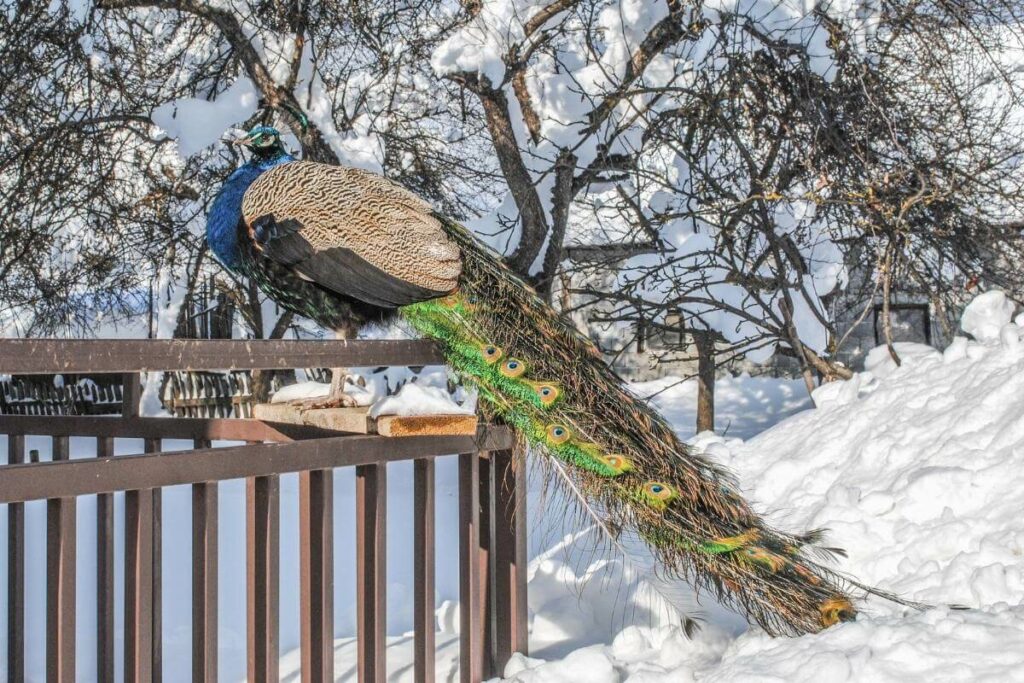
Because the cold weather will kill off most reptiles, amphibians, and insects, you can scatter cat food or specialized game feed on the ground.
These foods will add protein to the bird’s diet. More importantly, the protein will be animal protein, not pea or plant protein.
The reason why we recommend cat and poultry feed over dog food is that many dog food brands use plant-sourced protein. Although plant protein is not bad for Peacocks, it isn’t as good as animal-based protein.
You can obviously find cat food at just about any store you go to. The same is not necessarily true of feed game.
Be Creative: You can look online to find feed game specific for Peacocks or other similar birds. If you have a farming store near you, you can look there too.
What Foods to Avoid Feeding Wild Peacocks
Although it’s okay to feed a wild Peacock food on occasion, it’s important that you do not provide all of its food, unless you have every intention of taking care of the Peacock in the future too.
As for the occasional treat, there are some foods you should avoid when feeding the wild peacock in your yard.
Rotten Food
Obviously, don’t provide food waste or rotten foods for the Peacock.
Just as rotten food will hurt your stomach, it will hurt the Peacock too.
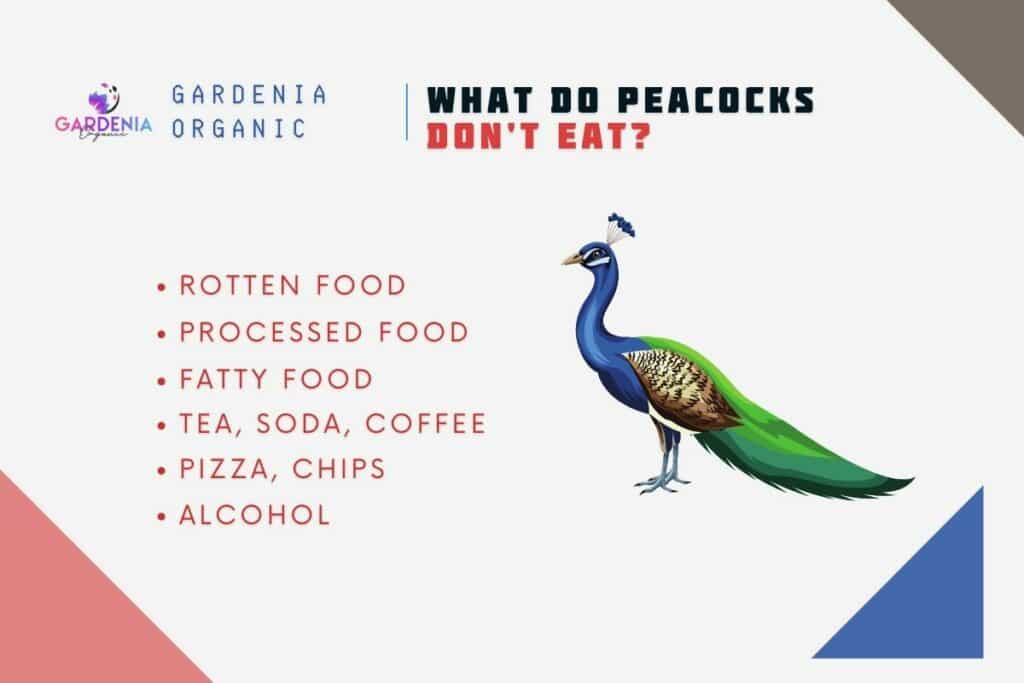
Processed Food
Don’t feed wild Peacocks junky or overly processed foods.
For example, crackers, chips, pizza, burgers, and tacos are all terrible choices for the Peacock.
The number of ingredients on these dishes can hurt the Peacock’s stomach, as can the preservatives and chemicals.
Fatty Food
Avoid feeding wild Peacocks overly fatty foods.
This obviously includes processed food like burgers and chocolate, but it can also include fresh fruits and vegetables like avocados.
Drinks to Avoid
Be careful about what drinks you provide for wild Peacocks.
Although fresh juices and water are suitable, don’t feed them tea, soda, coffee, or alcohol.
Likewise, don’t provide processed juice since it contains so much sugar and additives.
Final Thoughts
If you see a wild Peacock in your yard, feel free to feed it fresh fruits and vegetables.
Try to choose fruits and vegetables with a lot of seeds for the added protein.
During the summer, you don’t need to add any additional protein, but you can consider feeding cat food or game bird feed to the Peacock in the winter.
Regardless of what you feed the Peacock, remember to be responsible with the feeding habits.
If you have no intention of caring for the Peacock, do not overly feed it and make it become dependent on you.
There’s no harm in leaving out the occasional fruit or vegetable for the bird to find, though.
You May Also Like
- How to Keep Peacocks from Flying Away?
- What Time of the Day Are Garden Birds Most Active?
- I Have a Hedgehog in My Garden, What Do I Do?
